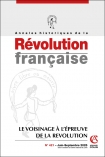
Revue de l'histoire des religions (4/2011)
Pour acheter ce numéro, contactez-nous
Recevez les numéros de l'année en cours et accédez à l'intégralité des articles en ligne.
L’article vise à montrer que la tension originaire entre le christianisme et la Loi, illustrée dans le premier art chrétien par le motif de la Traditio legis, a été assumée par les théologiens du XIIIe siècle non seulement dans leur conception dialectique des rapports entre Ancien et Nouveau Testament, mais aussi dans la construction scolastique de normes chrétiennes sur la base de préceptes vétérotestamentaires (comme ceux du sabbat ou de la dîme). S’y révèlent, de façon générale, le rôle spécifi que des maîtres dans « l’accomplissement » de la Loi inauguré par le Christ ; de façon particulière, l’interaction forte entre théologie et droit canonique, observée ici dans la déconstruction et la refondation théologique du précepte de la dîme.
This paper aims at showing that the original tension between Christianity and the Law, represented by the Traditio legis motif in early Christian art, is assumed by the thirteenth century theologians not only in their dialectic conception of the relationships between Old et New Testaments, but also in the scholastic working out of Christian norms grounded on Old-Testament precepts such as those imposing Sabbath observance or the paying of tithes. In a general way, they show the specifi c role of the masters in “fulfi lling” the Law, as initiated by Christ; in a more particular way, they also show the strong interweaving of theology and canon law which can be observed in the theological deconstruction and recasting of the obligation of paying tithes.

